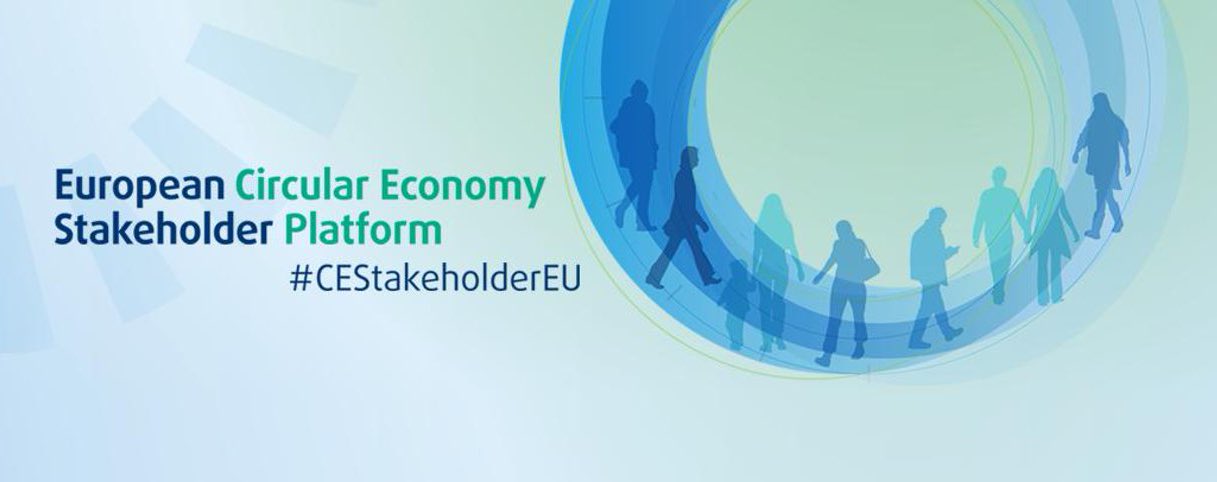Économie
ESG
Europe
The European Circular Economy Stakeholder Platform (ECESP) is a joint initiative of the European Commission and the European Economic and Social Committee to find solutions and promote circularity.
1. 5th edition of the ECESP Conference
The European Circular Economy Stakeholder Platform (ECESP) is a joint initiative by the European Commission and the European Economic and Social Committee that aims to find solutions and promote circularity. In the first week of March, the ECESP hosted the 5th edition of its annual stakeholder conference. The conference brought together different industries with experts in circularity, small and large companies, and EU and French governance members.
This 5th edition demonstrated the resilience of European stakeholders as they forged forward amidst the pandemic. 2022 looks set to present new challenges as geopolitical tensions increase and may side-track their circular ambitions.
The ECESP conference highlighted the successes of the stakeholders, brought attention to key issues and promoted insightful solutions and innovative ideas.
One of the cardinal points that arose from the conference was the need for standardization on a European scale; whether it be the standardization of waste collection schemes, food labels, or even mining protocols. Standardization is key for internal business practices, and in instances in which consumer interactions occur, this can help simplify consumer options and behaviour. For example, standardizing waste disposal and recycling rules on a national and European level could help facilitate the process, reduce time spent sorting out materials and help reduce waste and increase circularity.
The second point of importance was the need for increased collaboration. Although circularity aims to close the system gaps, the scope must be enlarged to ensure systemic solutions are not isolated. Circular knowledge and practices can only be efficient and impactful on larger scales, inter-industrial exchange is therefore of the utmost importance. Additionally, sharing circular economy-related knowledge should be imparted to European citizens, starting with the younger generations in schools and universities. Collaboration should be a joint effort, taking into account the feedback, needs and environmental concerns of European consumers of all ages.
One of the cardinal points that arose from the conference was the need for standardization on a European scale; whether it be the standardization of waste collection schemes, food labels, or even mining protocols. Standardization is key for internal business practices, and in instances in which consumer interactions occur, this can help simplify consumer options and behaviour. For example, standardizing waste disposal and recycling rules on a national and European level could help facilitate the process, reduce time spent sorting out materials and help reduce waste and increase circularity.
The second point of importance was the need for increased collaboration. Although circularity aims to close the system gaps, the scope must be enlarged to ensure systemic solutions are not isolated. Circular knowledge and practices can only be efficient and impactful on larger scales, inter-industrial exchange is therefore of the utmost importance. Additionally, sharing circular economy-related knowledge should be imparted to European citizens, starting with the younger generations in schools and universities. Collaboration should be a joint effort, taking into account the feedback, needs and environmental concerns of European consumers of all ages.
2. How can data help circularity?
Data has become increasingly important within the circular economy and is being used in many ways. Despite the significant ecological footprint of data, the use of data as a solution to circularity issues remains ubiquitous. The conference drew attention to two main ways of using data to facilitate circularity.
Data can be used to increase traceability, which is paramount to ensure circularity. By collecting and storing quality data, companies can gain invaluable insight into their life cycle and increase transparency. Digitization can in certain instances increase the scope of action to national and European levels, as it provides clarity.
Moreover, data can be used to model potential outcomes of different circularity measures according to specific industries. Modelling can allow companies to make informed long-term decisions, that could drastically increase their economic and environmental viability.
Professor Luc Alaerts led a workshop presentation titled “Circular economy and climate: a perspective from monitoring and scenarios “, which focused on the use of data modelling to determine the emissions linked to decisions at all stages of the life cycle. As an academic for Leuven University, he has adapted the use of modelling for cities as well as for the automobile industry, which he mentioned during the conference, demonstrating the versatility of data modelling for circularity. This could be further developed to incorporate notions of biodiversity impact in the future.
As data becomes further entrenched into the circular model, it remains important to think of ways to reduce the environmental impact of digitization processes. For digitization to prove truly beneficial to the circular economy, it must be a viable solution.
Moreover, data can be used to model potential outcomes of different circularity measures according to specific industries. Modelling can allow companies to make informed long-term decisions, that could drastically increase their economic and environmental viability.
Professor Luc Alaerts led a workshop presentation titled “Circular economy and climate: a perspective from monitoring and scenarios “, which focused on the use of data modelling to determine the emissions linked to decisions at all stages of the life cycle. As an academic for Leuven University, he has adapted the use of modelling for cities as well as for the automobile industry, which he mentioned during the conference, demonstrating the versatility of data modelling for circularity. This could be further developed to incorporate notions of biodiversity impact in the future.
As data becomes further entrenched into the circular model, it remains important to think of ways to reduce the environmental impact of digitization processes. For digitization to prove truly beneficial to the circular economy, it must be a viable solution.
3. Parting Words
The 5th edition of the ECESP conference was extremely insightful and tackled fundamental topics regarding the circular economy model, new and past challenges and future opportunities.
The conference ended on a high note as Cillian Lohan, a member of the European Economic and Social Committee, and long-time attendant of the ECESP closed the conference with a hopeful tone.
“5 years ago, circular economy was synonymous to recycling, […] so there again we can see we have gone beyond just talking about it, and us, through the platform, the stakeholders, and of course, other groups as well have pushed that agenda to make those practical changes, and we have also seen we can still continue to push for more. “



